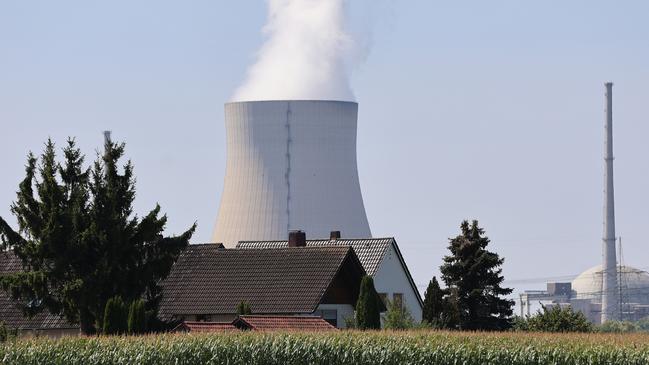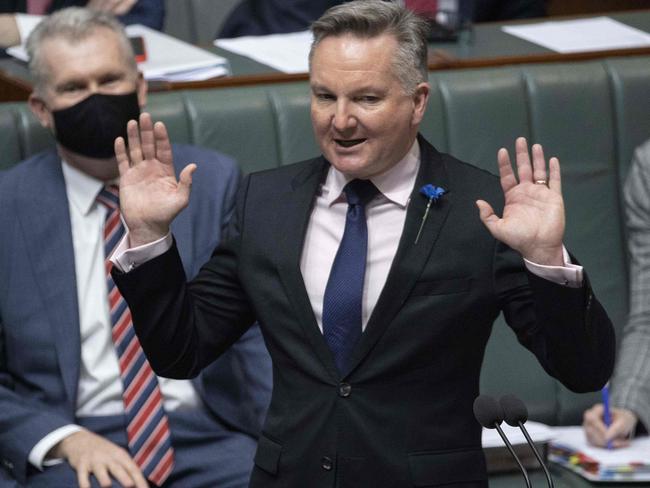Piers Akerman: GenCost 22 report fudges the figures on nuclear and solar power
The CSIRO’s high standards have been seriously questioned in an expert report into its handling of renewables which overstates the cost of nuclear energy and understates the cost of renewables.
Opinion
Don't miss out on the headlines from Opinion. Followed categories will be added to My News.
Attacking the CSIRO is like challenging motherhood but sometimes it needs to be done.
The organisation has in the past given the world revolutionary research delivering groundbreaking products ranging from extra-nutritious grains, animal vaccines and fast Wi-Fi to soft contact lenses and plastic banknotes.
But its high standards have been seriously questioned in an expert report into its handling of renewables, nuclear power and other low-carbon sources of energy in Australia.
Each year, the CSIRO and the energy market operator (AEMO) calculate the costs of building new electricity generation and storage technologies and publish what are known as GenCost reports.
A paper to be released by the apolitical Energy Policy Institute of Australia concludes that, due to various omissions, methodological inconsistencies and highly optimistic assumptions, the latest report, GenCost22, significantly overstates the cost of nuclear generation and understates the cost of ensuring that electricity from the variable renewable energy (VRE) technologies is “firm” (and so comparable with the cost of baseload generators).
As Prime Minister Anthony Albanese or Energy Minister Chris Bowen or NSW Climate Change Minister Matt Kean lack any obvious expertise in the field of energy or economics, it is assumed that they and their advisers rely on the CSIRO and its GenCost reports for their mocking dismissals of nuclear power and refusal to countenance a debate on lifting the ban on nuclear energy in Australia.

Albanese cackled last week as he ridiculed the possibility that uranium, which we have in abundance, should be considered as a power source.
He doesn’t laugh when he’s asked when he’s going to deliver his $275 power price cut.
Bowen has dismissed the renewed interest in small modular reactors (SMRs) a ‘‘complete joke’’.
‘‘Nuclear is the most expensive form of energy,’’ he said. ‘‘We have a cost-of-living crisis, energy prices going through the roof, and what’s their big bright idea?’’
But both men are wrong, possibly because they have been serially misinformed by the CSIRO. Nuclear is the cheapest source of reliable dispatchable energy as the 32 nations which rely on it can confirm.
Kean last week boasted of the NSW’s government $1.2bn investment in the 700MW Waratah Super Battery which will be able to store up to four hours of energy when the wind doesn’t blow and the sun doesn’t shine – like night time – and he wants to close all of the state’s coal-fired power plants by 2030. At the same time, both governments are urging the public to buy expensive electric cars and charge them at night – dumb and dumber just isn’t in it.
Even green Californians have been told not to use or charge their electric vehicles, as that state is hit by power shortages.
I have had a chance to study the executive summary of the review of EPIA paper and the full report is scheduled to be released next week.

GenCost is based on small modular nuclear reactor cost estimates that are seven years old and no longer applicable.
The CSIRO’s report has omitted the cost of connecting remote wind and solar farms and the associated losses while SMRs could be located on the sites of existing (but soon to be closed) coal-fired power plants resulting in low connection costs and losses. The report also does not evaluate base load technologies on their technical capabilities.
The assumption GenCost makes for the capacity of wind and solar technologies are wildly at odds with the capacity in the real world.
There’s more but it’s worth noting the CSIRO’s analysis is inconsistent with its own earlier and detailed study, which sought to ensure the grid was robust during weather droughts, when the wind and sun weren’t co-operating with the hopey-wishey brigade – like the majority of the time.
As noted in the EPIA summary, “when corrections are made for these factors, the recalculated levelised cost of electricity contradict the GenCost22 conclusion that integrated wind and solar are the ‘cheapest’ new generation technologies”.
Compare the two power systems – one capable of base load dispatch 24/7 and one which operates only when it’s windy and sunny and requires expensive firming (currently diesel) technologies at other times.
How can nuclear not be cheaper?





